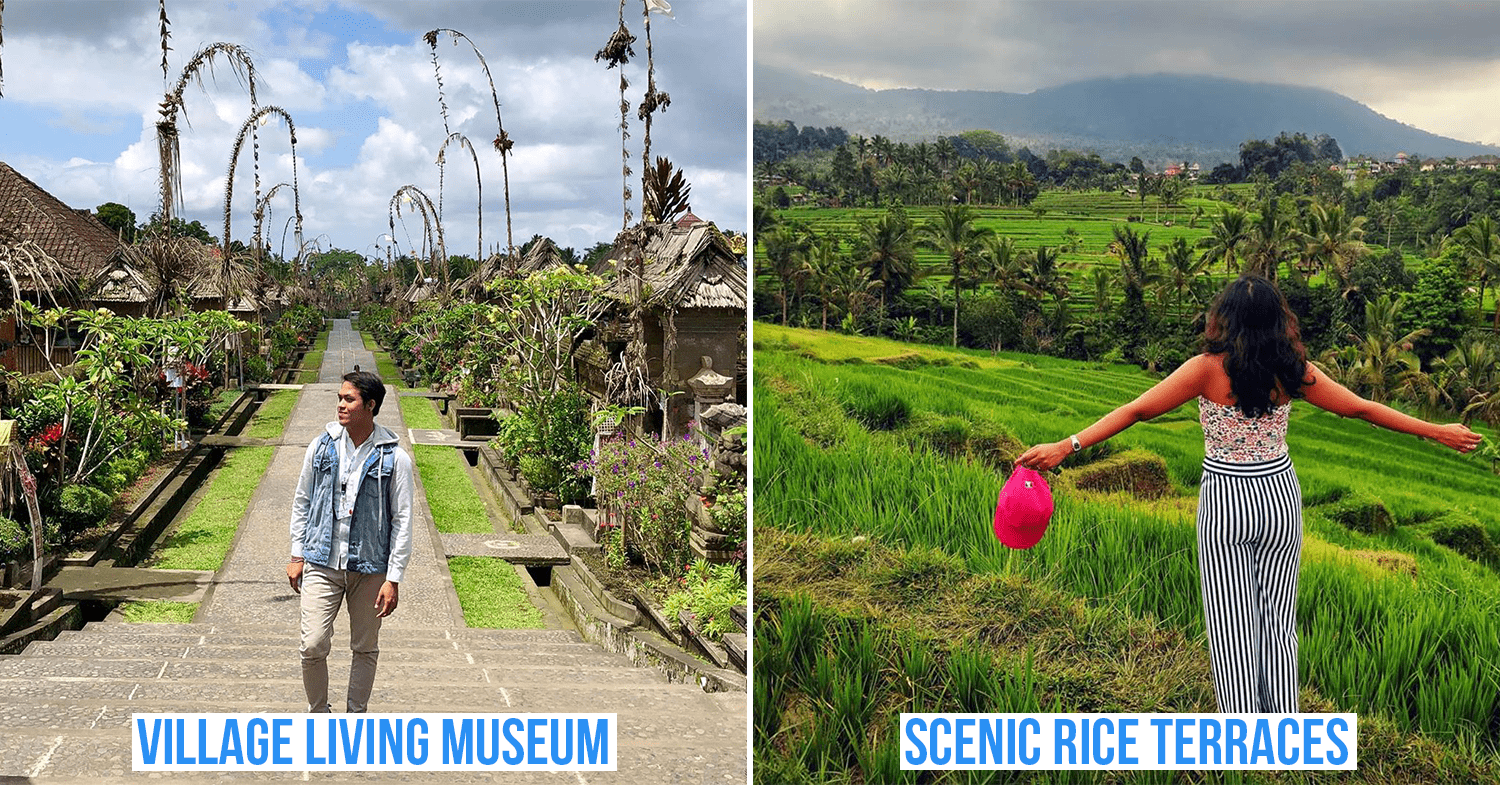Traditional Bali villages to visit
Exclusive beach clubs and a thriving nightlife scene are what tourists typically associate with Bali. But what makes the island truly special is that beneath all that glamour, there are still plenty of Bali villages that have retained much of the island’s rural charm.
For those interested in what the real Bali looks like, head out to these Bali villages where you can see unique funeral traditions and the art of jewelry-making amidst scenic rice terraces.
1. Trunyan Village – isolated village with a unique funeral tradition
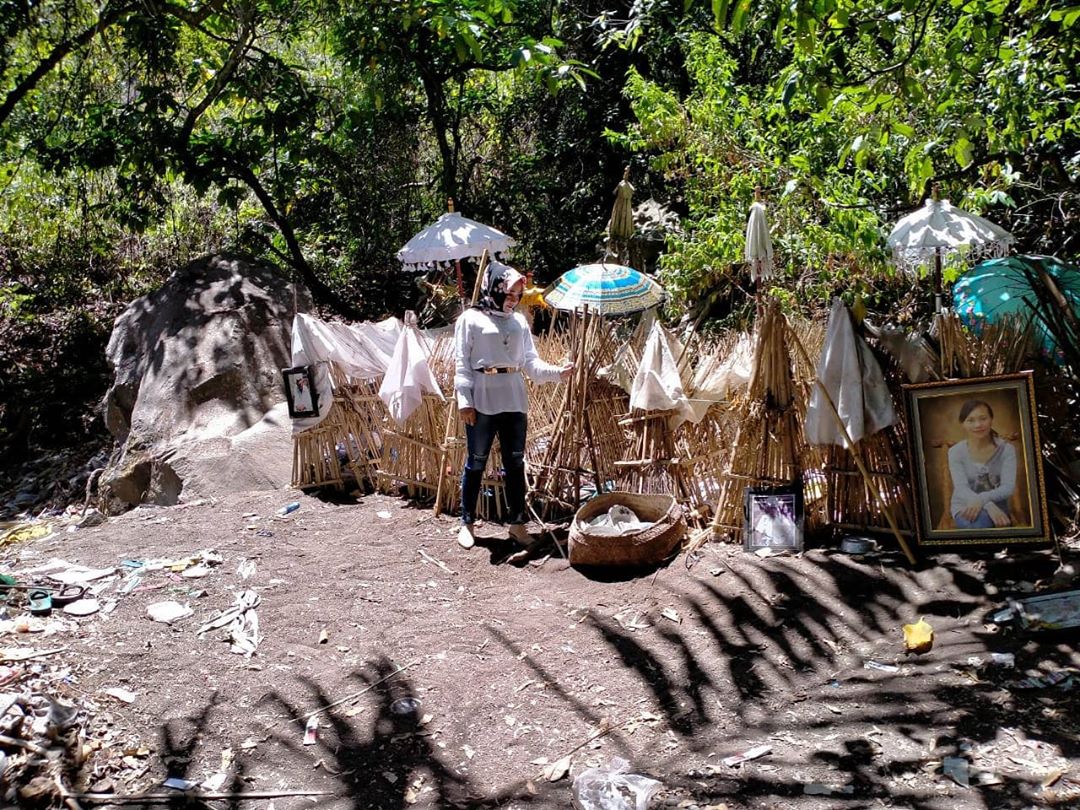
The cemetery at Trunyan Village
Image credit: @neng_iah89
With a nation as culturally diverse as Indonesia, unique funerary traditions are pretty common in the archipelago. There’re the Torajans of South Sulawesi with their Ma’Nene ritual and there’s the Bali Aga, the indigenous people of Bali also with their own unique burial traditions.
Well, perhaps burial is too strong of a word as the Bali Aga of the Trunyan Village, located at the isolated eastern shore of Lake Batur, don’t really bury their dead. Instead, the bodies of deceased villagers are simply cleaned and left to decompose on the ground under a bamboo cage with their clothes on.
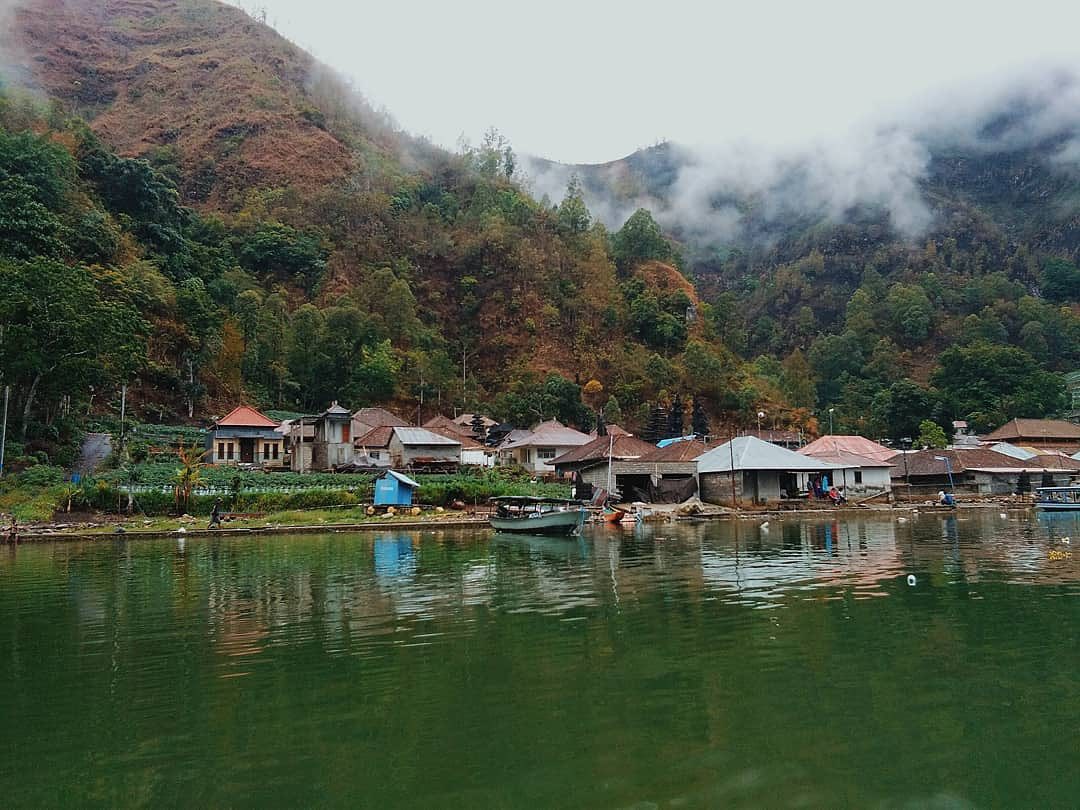
Trunyan Village at the eastern shore of Lake Batur
Image credit: @baliadvertiser
Locals believe that the scent of the nearby ancient banyan tree, locally known as taru menyan, Balinese for “pleasant smelling”, counters the putrid smell of the decaying corpses. This isn’t just superstition though as there’s no smell of decay like you’d normally expect.
As the village is quite isolated though, getting to Trunyan is quite a challenge. While you can rent a boat and go there yourself, prices are going to vary depending on your bargaining skills. We recommend booking a private tour costing around Rp. 800,000 (~USD54.59) per person for a group of two.
2. Celuk Village – silversmith community with a jewelry-making workshop
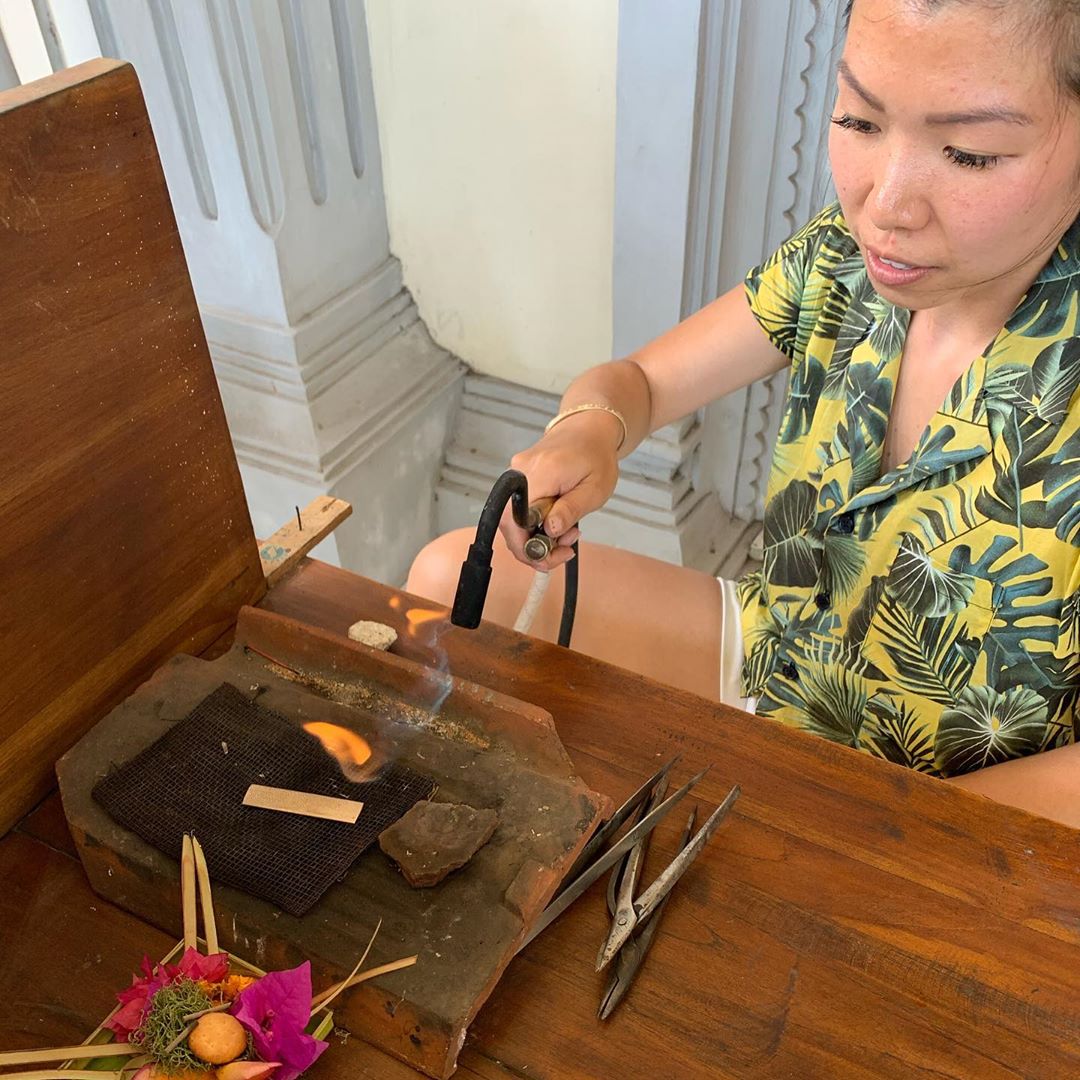
Participating in a jewelry-making workshop
Image credit: @mrs.doreenleung
If Yogyakarta has the historic neighborhood of Kotagede, Bali has the Celuk Village. Both villages are home to a community of silversmiths and known for their intricate jewelry with prices to match the quality on offer.
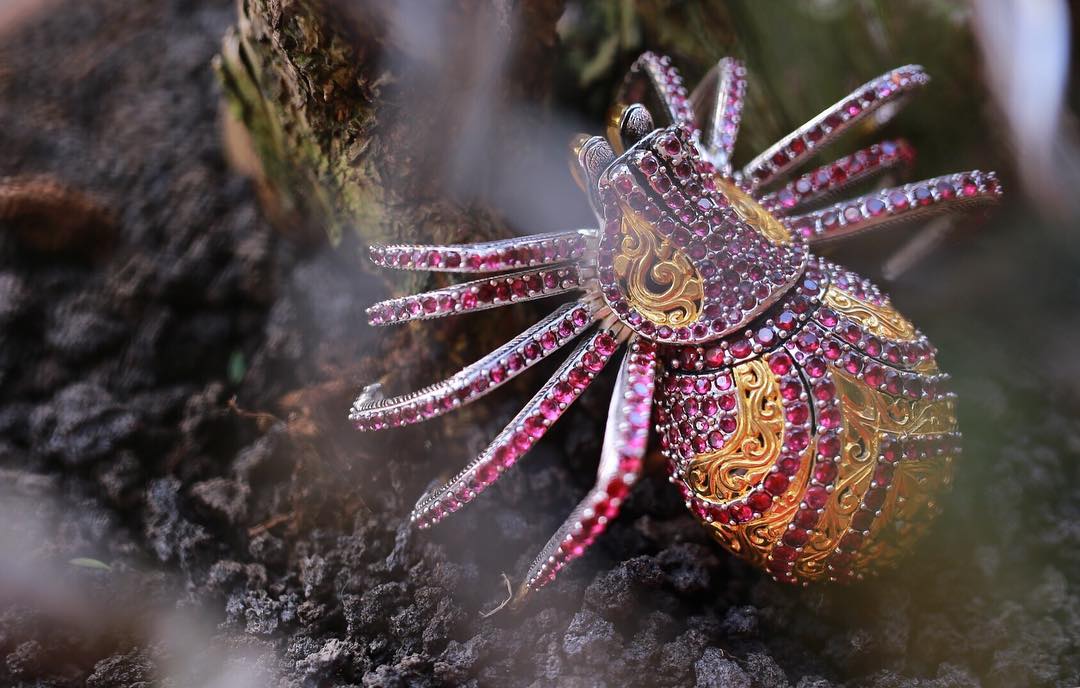
Silver Tarantula accessory showcased during Celuk Jewelry Festival in 2016
Image credit: @gdeariee
The streets of Celuk are lined up with jewelry galleries on both sides so those looking for a memento to bring home are going to be spoilt for choice. Often, the workshops are attached to the galleries and if you’re interested, you can also check out how the pieces are made and even take a jewelry-making class for a more immersive experience.
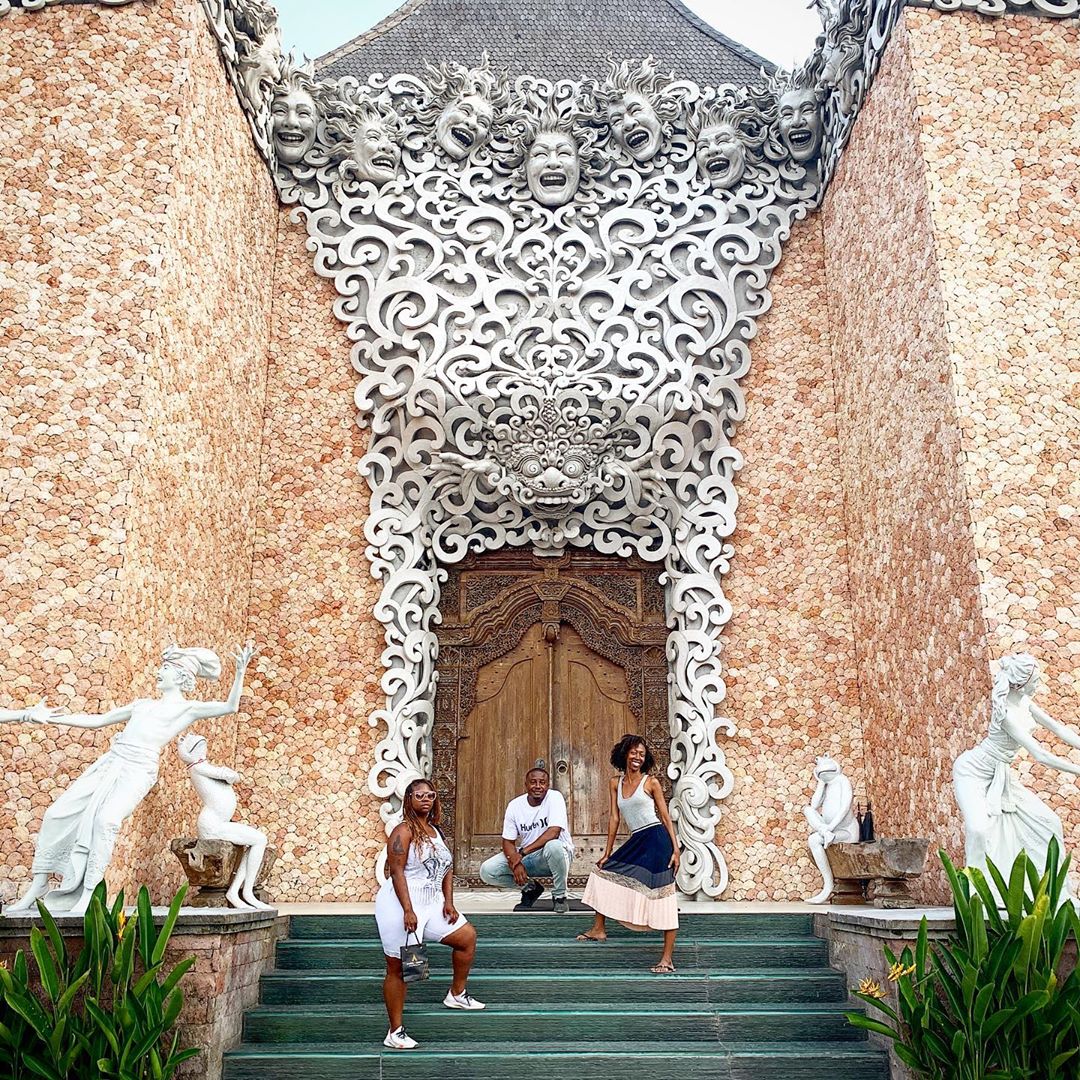
Angel to Angel, one of the many jewelry galleries in the area
Image credit: @ladylilabrown
If you’re a bit overwhelmed by the number of galleries in the area, we recommend hitting Angel to Angel first. The building’s impressive facade is impossible to miss and they boast one of the bigger collections in Celuk, although at a slightly more premium price than smaller jewelry shops.
3. Jatiluwih Village – beautiful rice terraces with a unique irrigation system
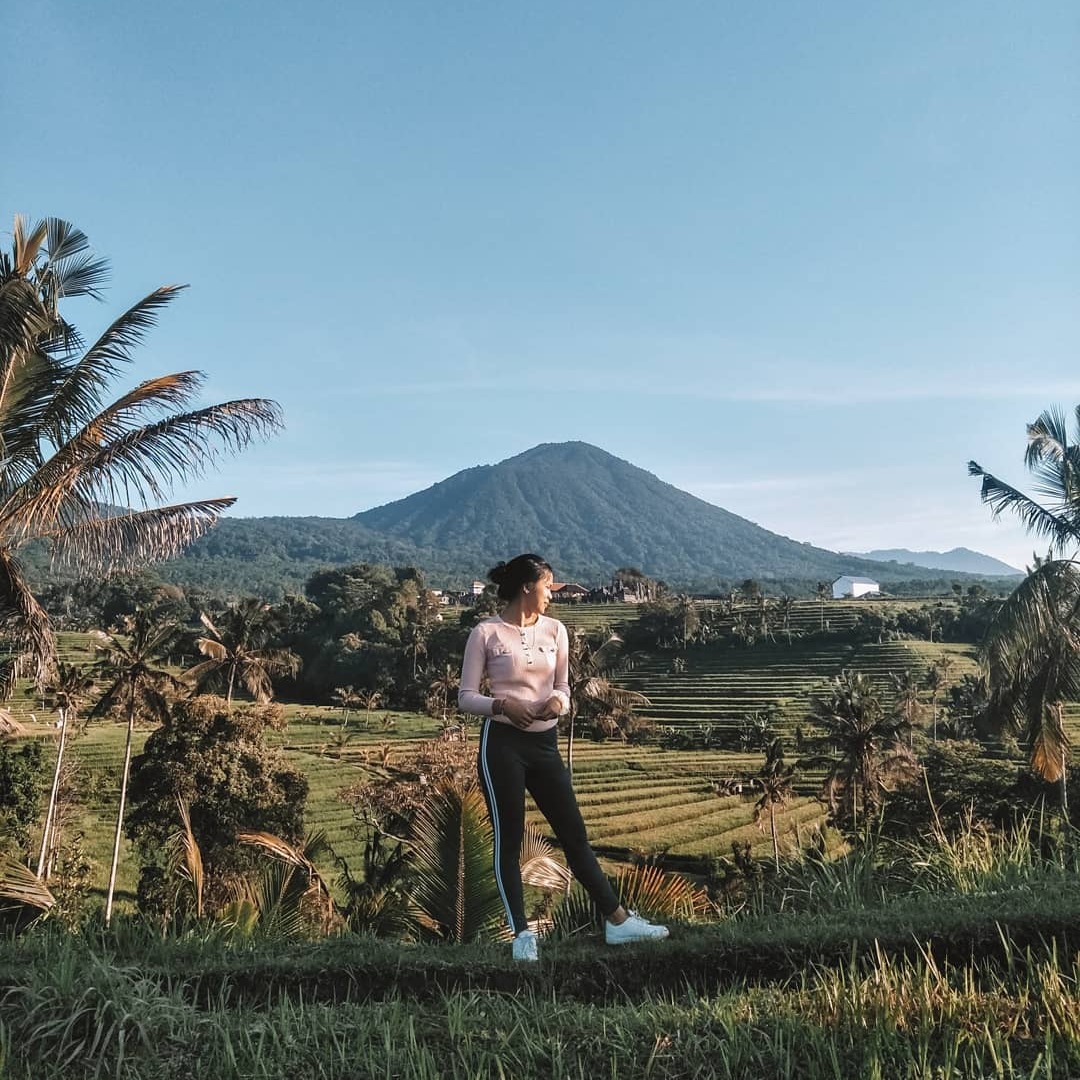
Strolling through the rice terraces with the verdant mountains in the background
Image credit: @cahyanii_27
With scenic rice terraces as far as the eye can see, Jatiluwih Village is probably more in line with your idea of a traditional Bali village. The rice terraces aren’t just eye candy either as in 2012, they were recognized as a UNESCO World Heritage Site thanks to their use of subak, a unique irrigation system dating back to the 9th century and still in use to this day.
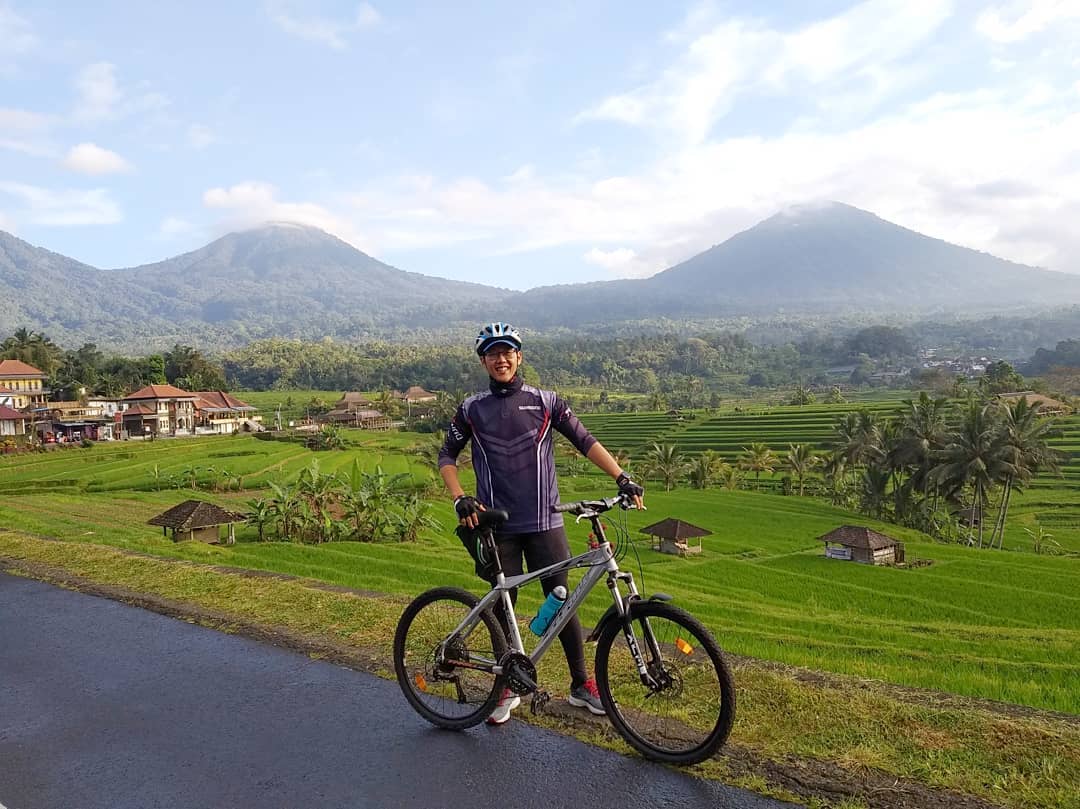
The area is also popular among cyclists
Image credit: @adrianusandhika
The Tegalalang rice terraces might be more well known but we much prefer the ones in Jatiluwih as they’re much more expansive, stretching out to over 600 hectares of land. The area is also considerably less touristy with fewer souvenir shops and restaurants, exactly how a rural Bali village should be.
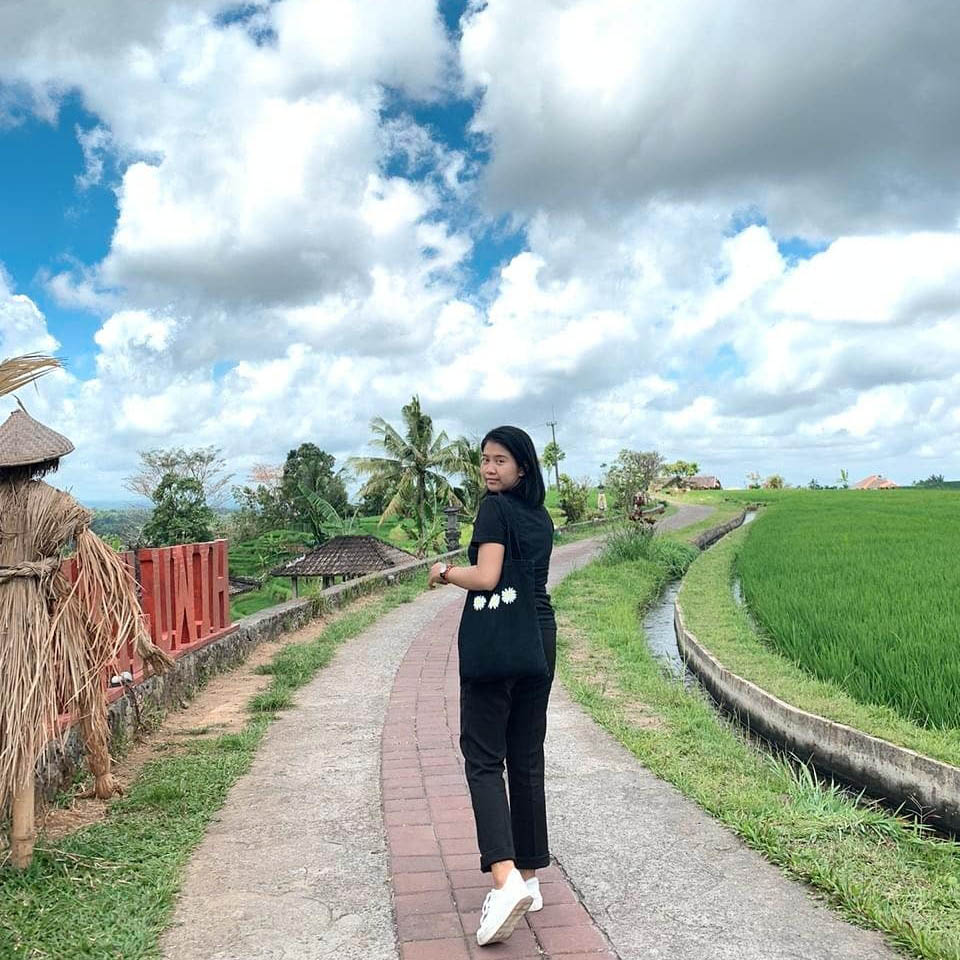
One of the several paved routes in Jatiluwih
Image credit: @putripriland
We recommend visiting the area in the morning and going for a walk along the several paved walking trails in the village. The shortest one clocks in at 1.47KM while for the power walkers and cyclists, there’s an incredible 7.7KM route that takes you all over the village’s rice terraces.
Uniquely, Jatiluwih has 3 harvest seasons per year so there are plenty of chances for you to see the village at its greenest. As the village has been made into a designated tourist destination, there’s an admission fee of Rp. 40,000 (~USD2.72) for visitors.
4. Penglipuran Village – clean, rural village that looks straight out of a movie set
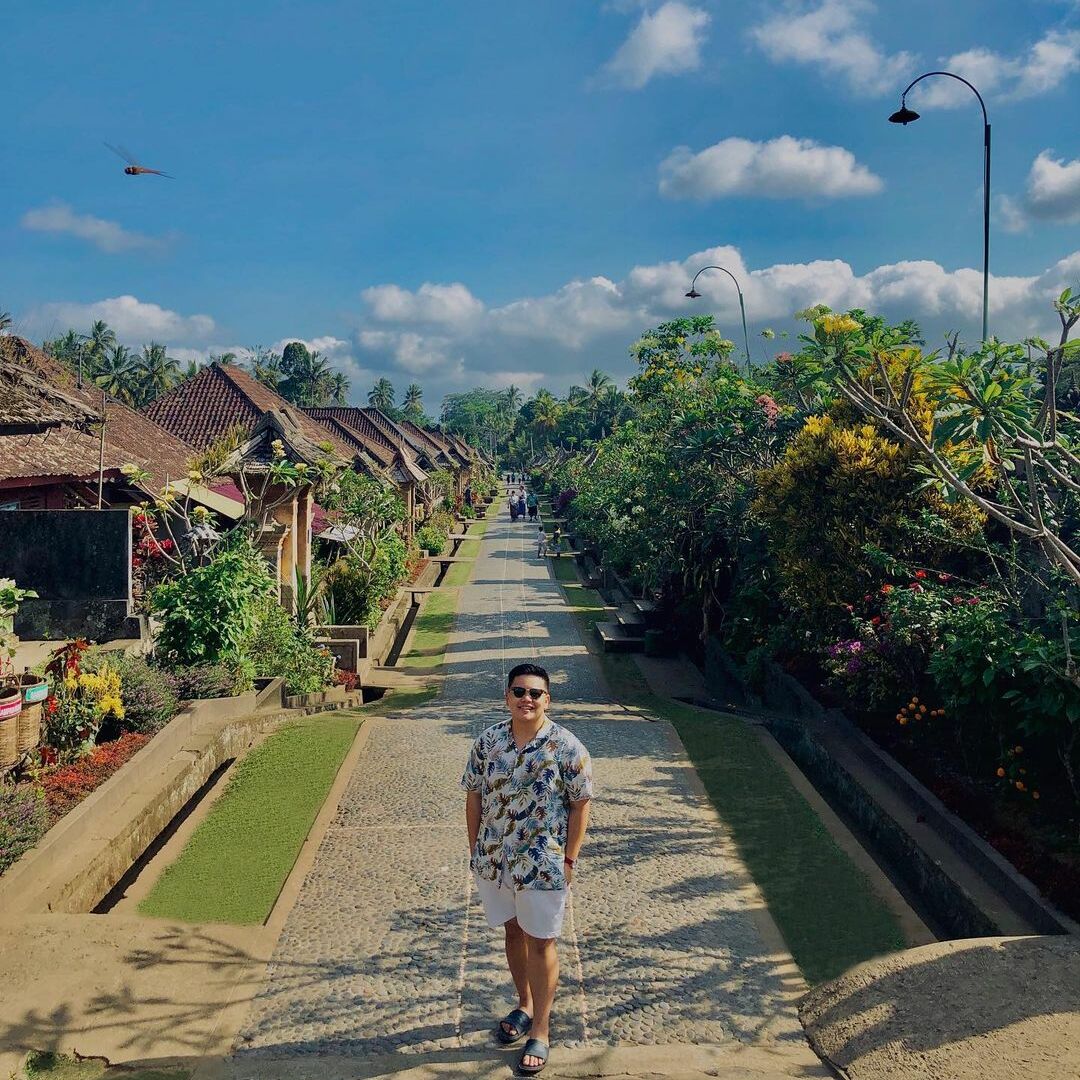
Penglipuran’s pristine main street
Image credit: @dr.michaelsie
Less of a village and more of a living museum, Penglipuran Village’s layouts are a well-preserved remnant of 16th-century Balinese life. We’re not kidding about the well-preserved part by the way, as Penglipuran’s neighborhood is cleaner than even some of the best hospitals in the world.
Houses have been left as-is, with all following the same traditional layout and no motor vehicles are allowed inside the village just to add to the authenticity. Thankfully, the village is rather small, consisting of one path uphill leading to the temple with houses on either side of the path.
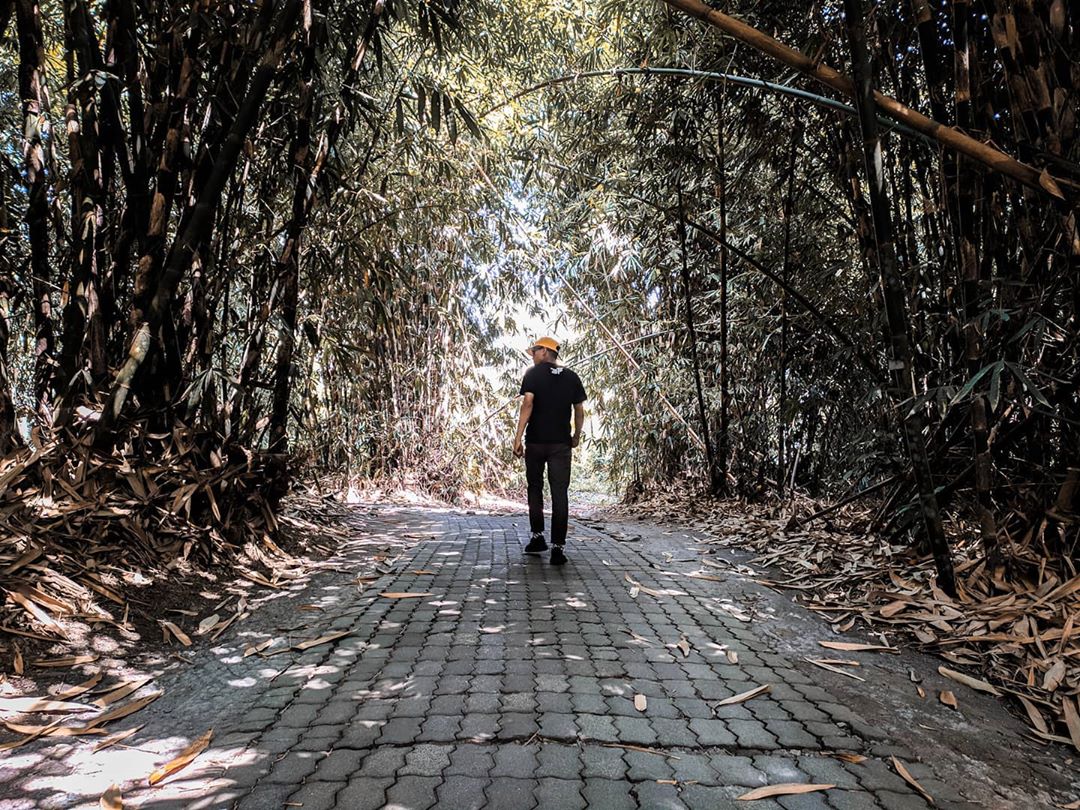
The bamboo forest just past the village is a tranquil walking spot
Image credit: @davitagustia_
If you’d like to extend your walk though, the bamboo forest surrounding the village provides the perfect shade on a clear, sunny day. To quench your thirst, have a taste of loloh cemcem, a traditional herbal drink not unlike jamu known for its eclectic mix of sweet, sour, and saltiness with just a hint of bitterness to top it all off.
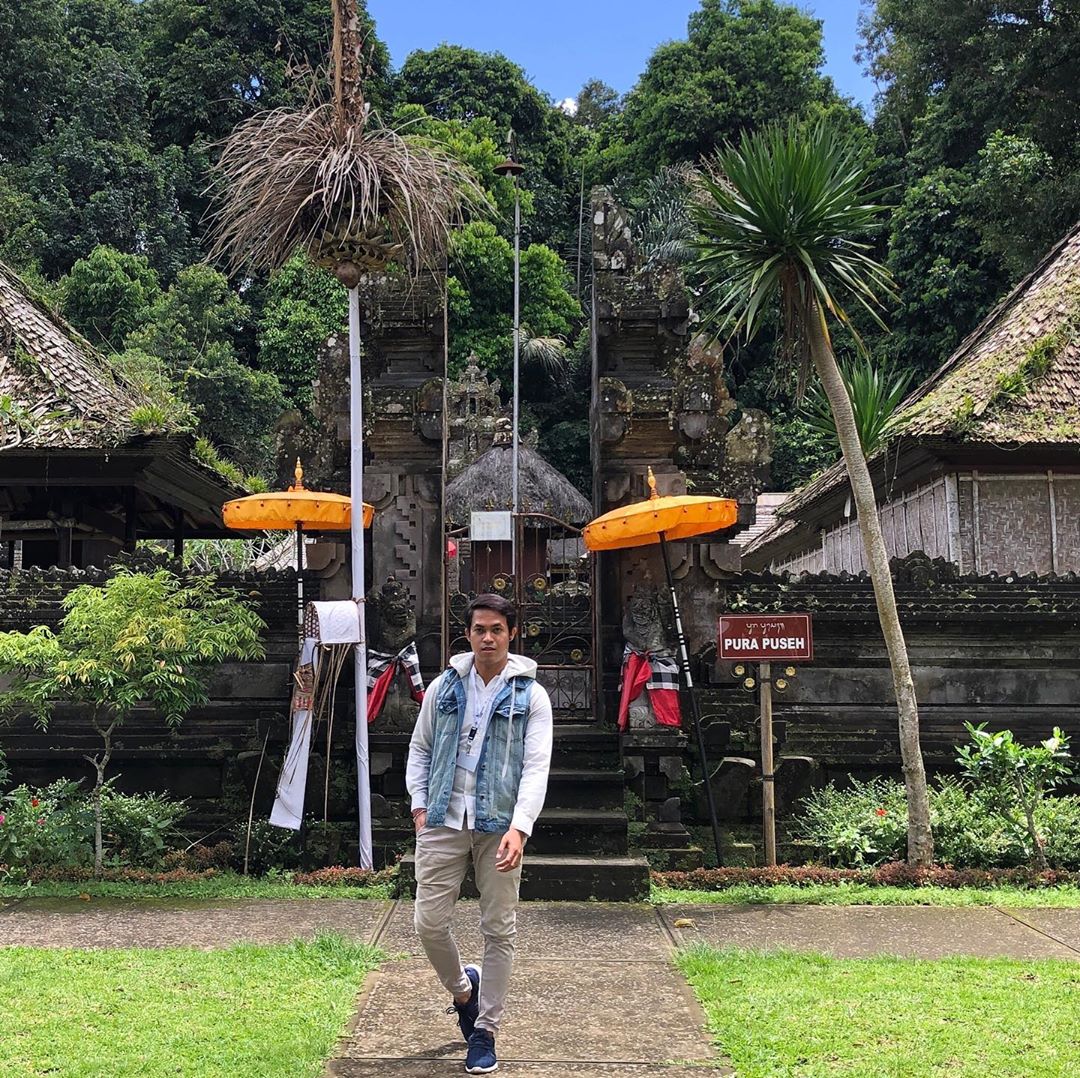
The temple at the far end of the village
Image credit: @dektajuna
The villagers are also very welcoming and many would often invite you into their homes and offer you some of their merchandise. For those wanting to experience more of their hospitality, there’s also a Homestay option for Rp. 375,000 (~USD25.51) per night.
As with Jatiluwih, Penglipuran Village has been made into a designated tourist destination and there’s an admission fee of Rp. 30,000 (~USD2.04).
5. Batubulan Village – artistic village with ‘magical’ stone carvings and daily barong performances
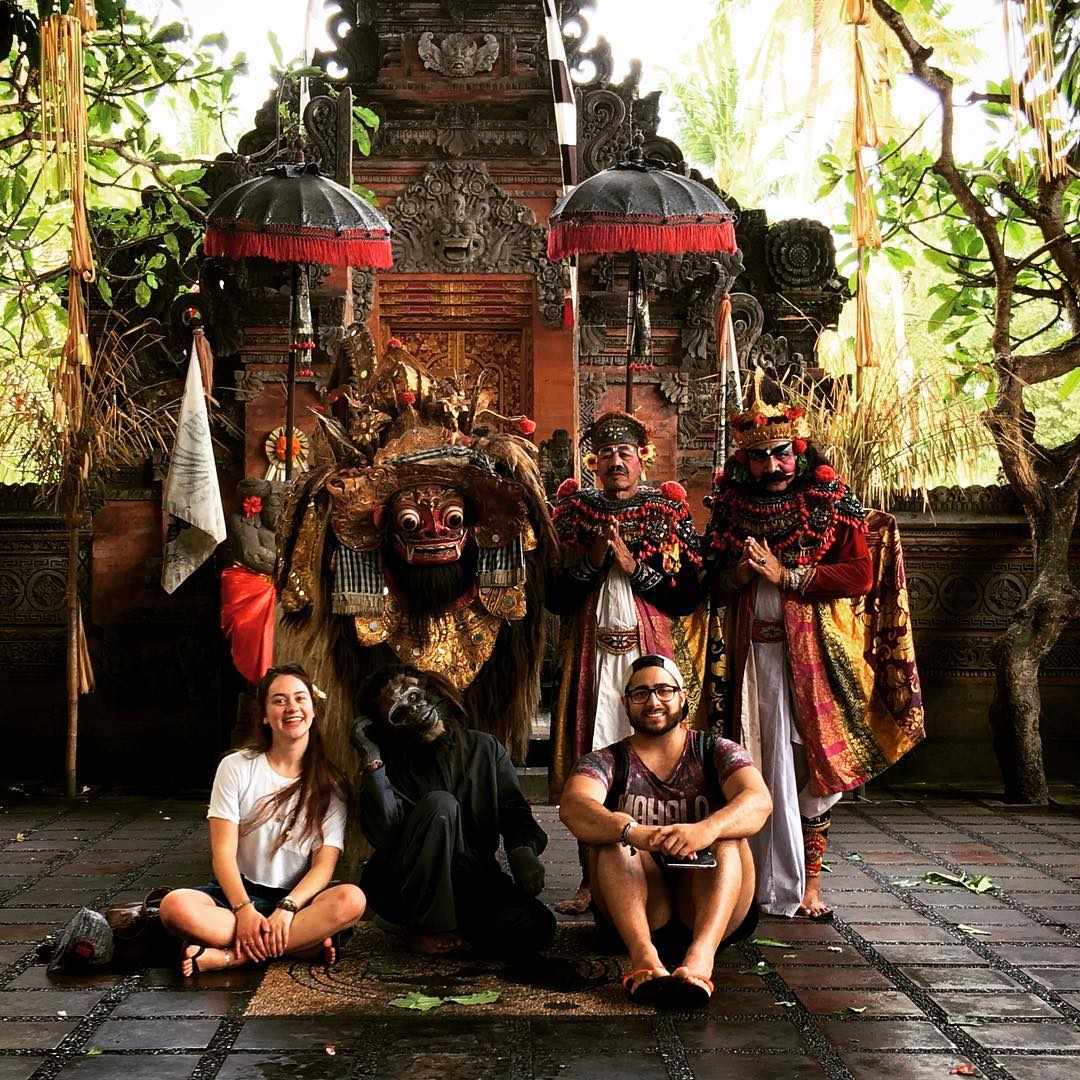
Posing with the Barong & Keris performers, still in costume
Image credit: @shadowkitty1703
Batu bulan literally translates to ‘Moon Stone’ and it’s only appropriate that Batubulan Village is home to a community of stone carvers. Locals believe that stone carvings made in the area possess magical qualities and if you’ve seen any stone carvings or sculptures on your trip around Bali, they were likely made here.
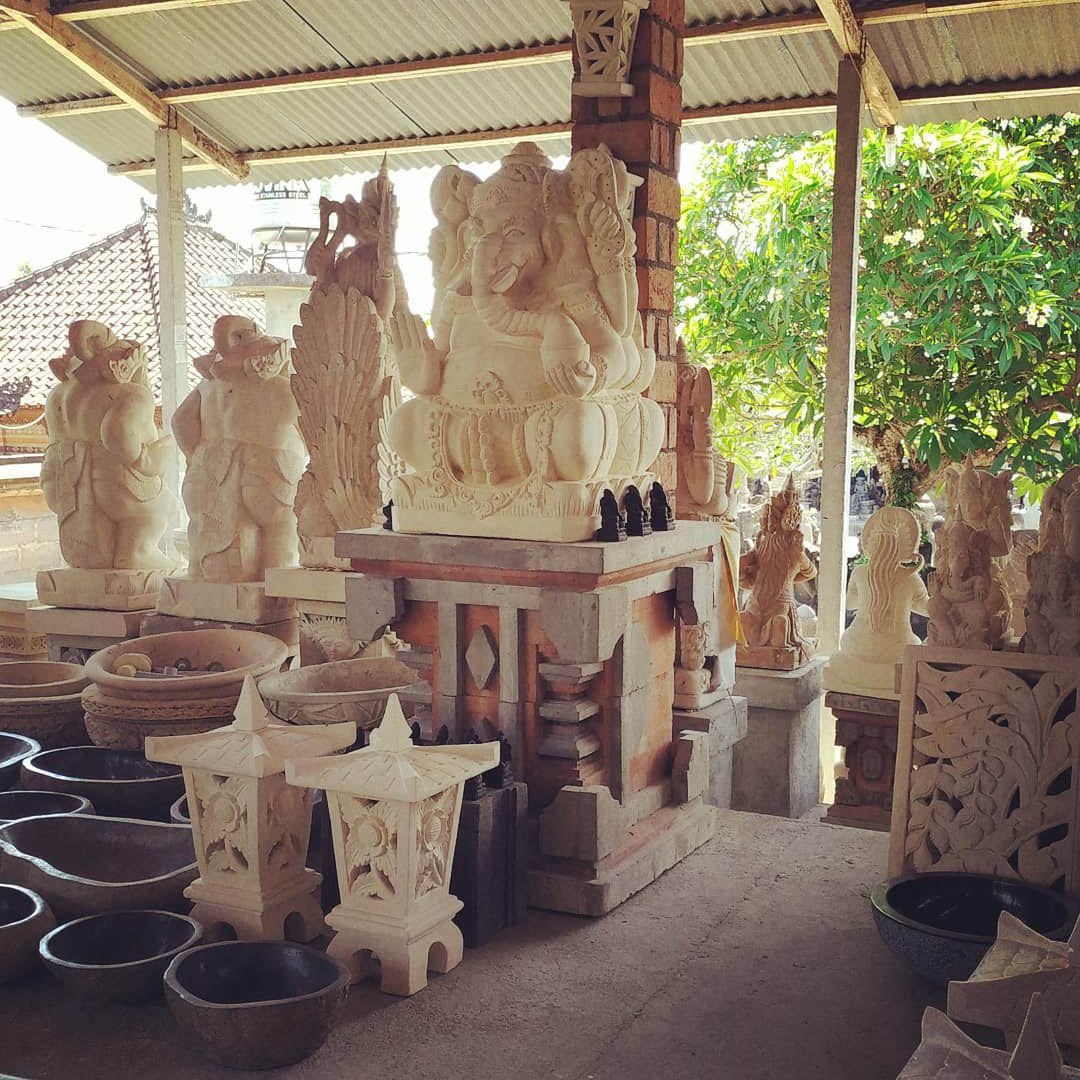
Stone carving studio in Batubulan
Image credit: @gedemahardika
Aside from the stone carvers, the village is also known for their efforts in preserving Bali’s traditional performing arts. The area is home to several dance troupes, offering daily barong & keris and kecak dance performances and the traditional ensemble percussion music known as gamelan.
Tickets to the dance performances typically cost around Rp. 100,000 (~USD6.80). We recommend going with Sahadewa studio, one of the more well-known dance troupes in the area.
6. Tenganan Village – home to the one-of-a-kind geringsing textiles
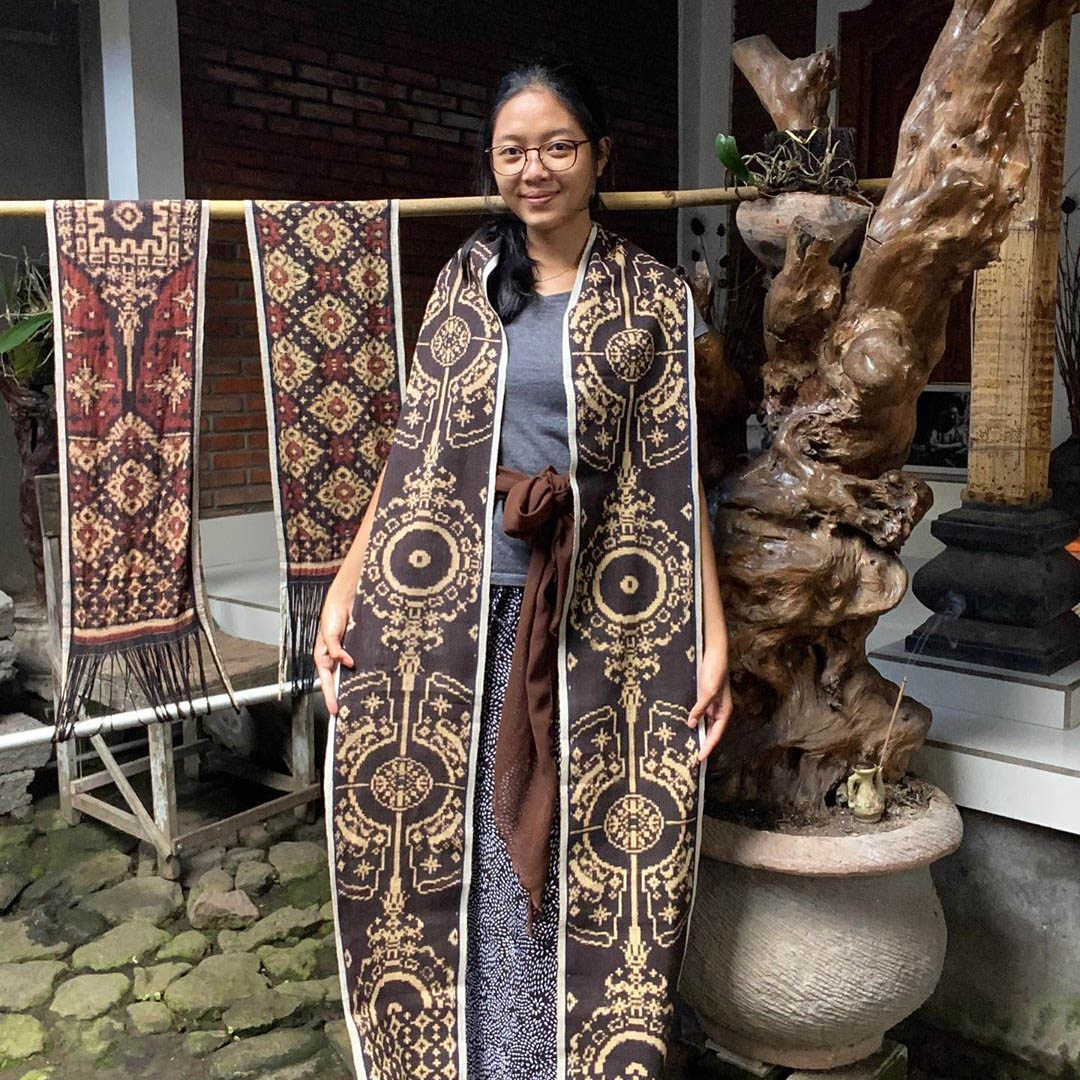
Wrapped in the village’s famous gringsing textile
Image credit: @antique_fabrics_gringsing
Tenganan Village is one of the few remaining homes of the Bali Aga tribe and like Trunyan, the villagers have their own set of traditions. Most notable is the geringsing, a double ikat dyeing technique used to pattern textiles. This creates some of the most difficult-to-make and therefore highly sought-after textiles since the days of Dutch colonization.
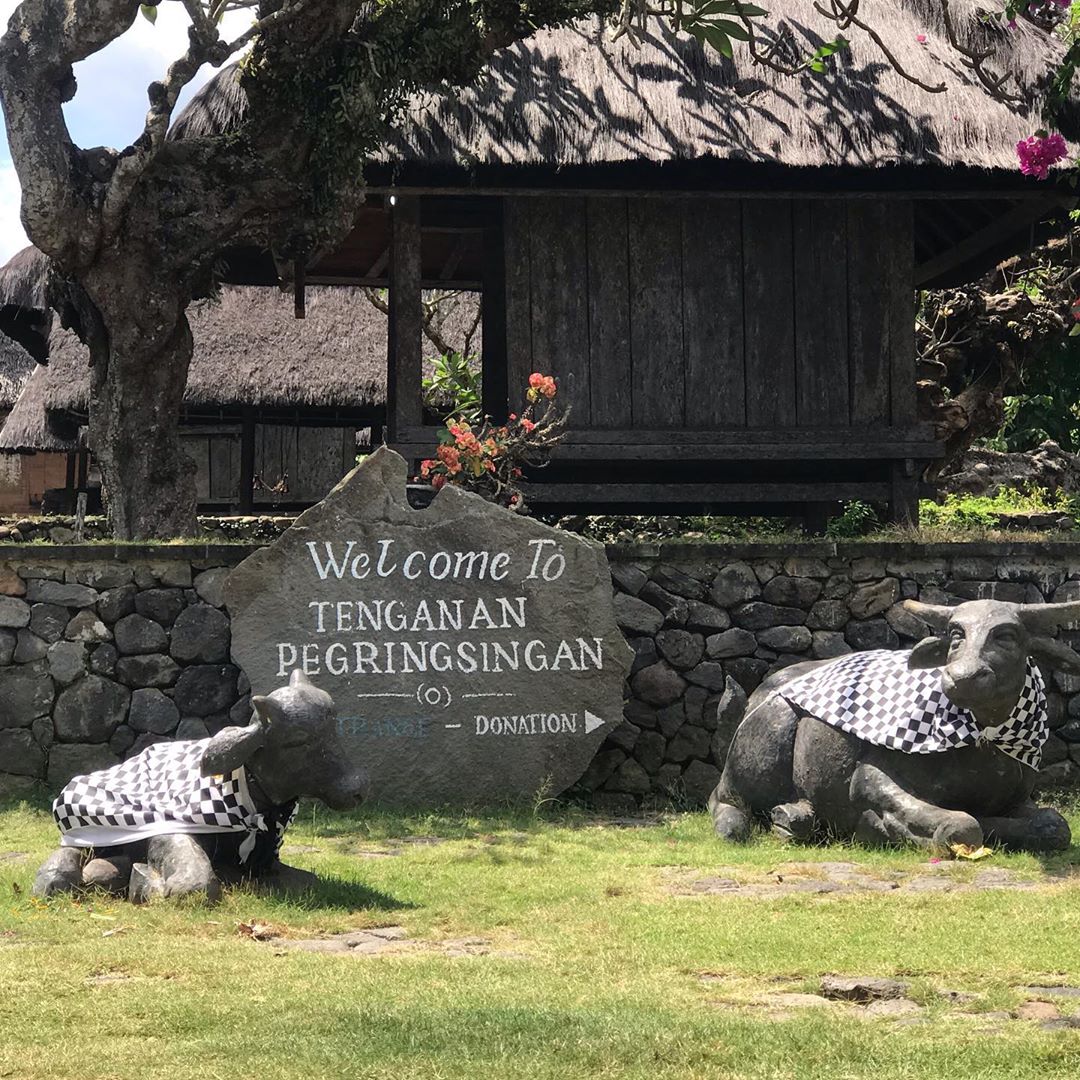
Entrance to Tenganan Village
Image credit: @aasunada333
The technique is still practiced even to this day and visitors can see how the process works and even purchase sarongs or other textiles made with the technique. Do note that they’re priced accordingly and you might want to hone your bargaining skills before visiting the village.
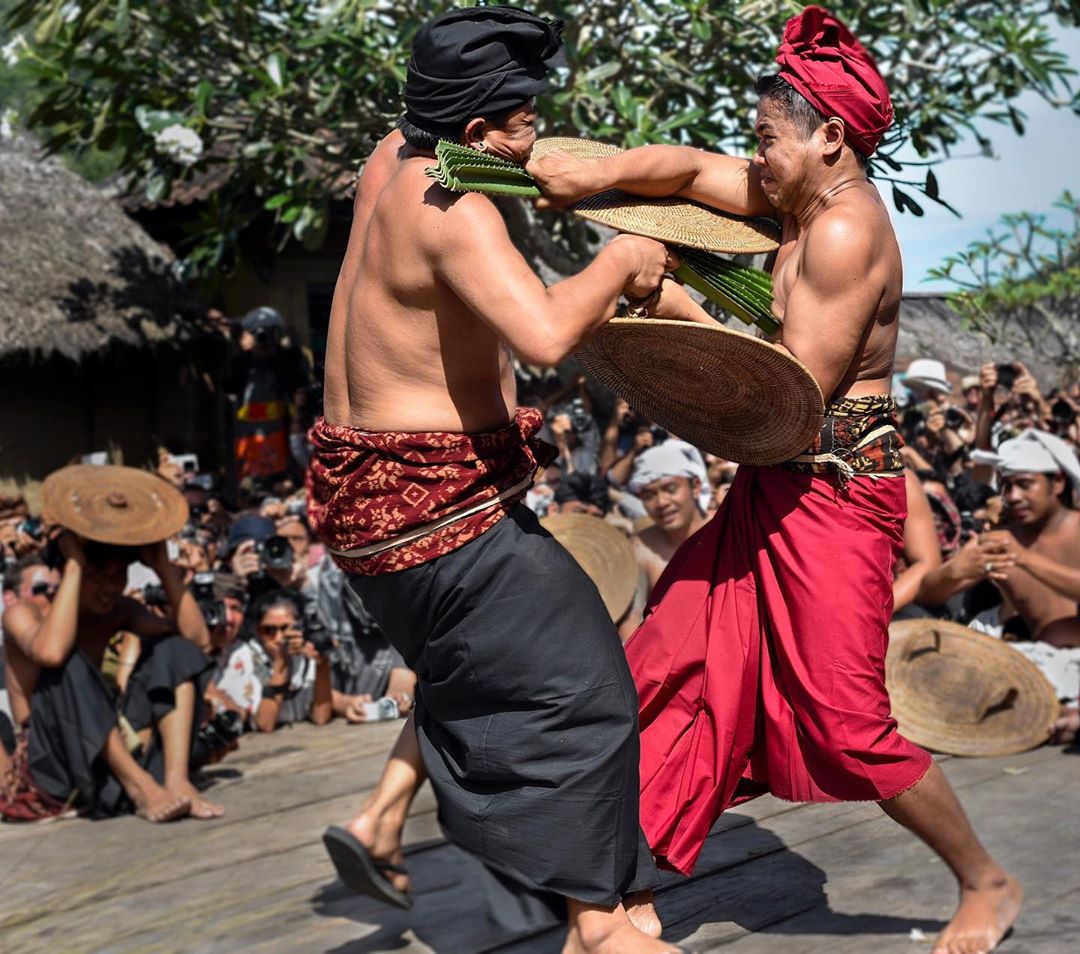
Perang Pandan, a cultural tradition practiced by the Bali Aga of Tenganan typically held around June
Image credit: @average_shutter
While not quite as isolated as Trunyan, the village is also fairly secluded and features the fairly untouched, yet attractive, scenery of a rural Bali village. Around June, visitors are also treated to the tradition of Perang Pandan, a mandatory combat ritual for Tenganan males using clubs made of pandan leaves.
There’s no fixed admission fee for entering the village, only a mandatory donation of your choosing. If you want to get better acquainted with the traditions of the Bali Aga, you’re in luck, as a guide is provided for you at the entrance.
7. Mas Village – the wood carving center of Bali

The courtyard of Njana Tilem Museum
Image credit: @jayanegara_komang
Located just south of the arts and cultural center that is Ubud, Mas Village is known for the quality of its wood carvings. At the center of the village lies the Njana Tilem Museum (Rp. 80,000, ~USD5.47), named after the father-and-son pair of Ida Bagus Njana and Ida Bagus Tilem, two Balinese wood-carving maestros.
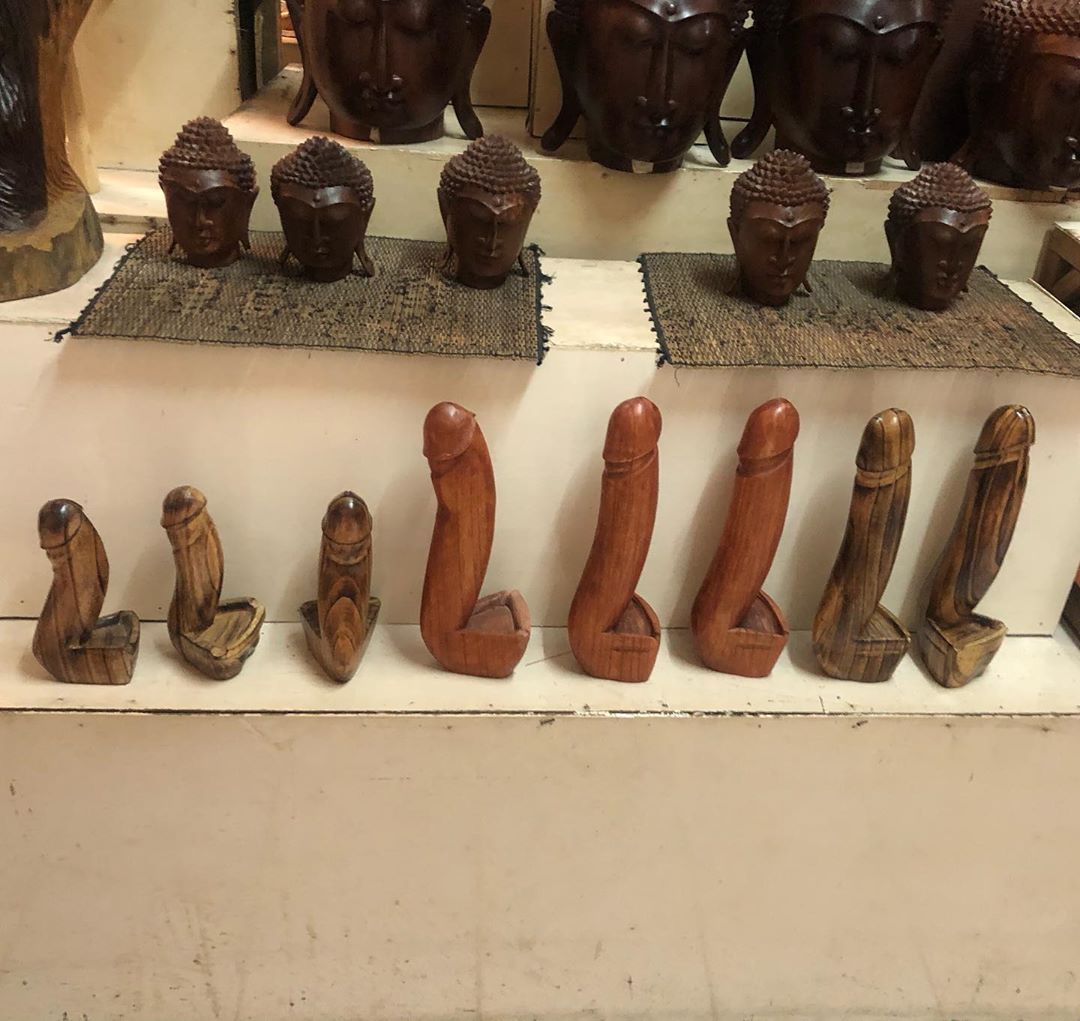
Several of the more unorthodox wood carvings in Mas Village
Image credit: @pg007gp
Aside from the priceless works on display, the museum’s impressive courtyard is also a great relaxing spot, with music performances being held regularly. Do note that as part of an effort to discourage forgeries, you’re not allowed to take photos inside the premises.
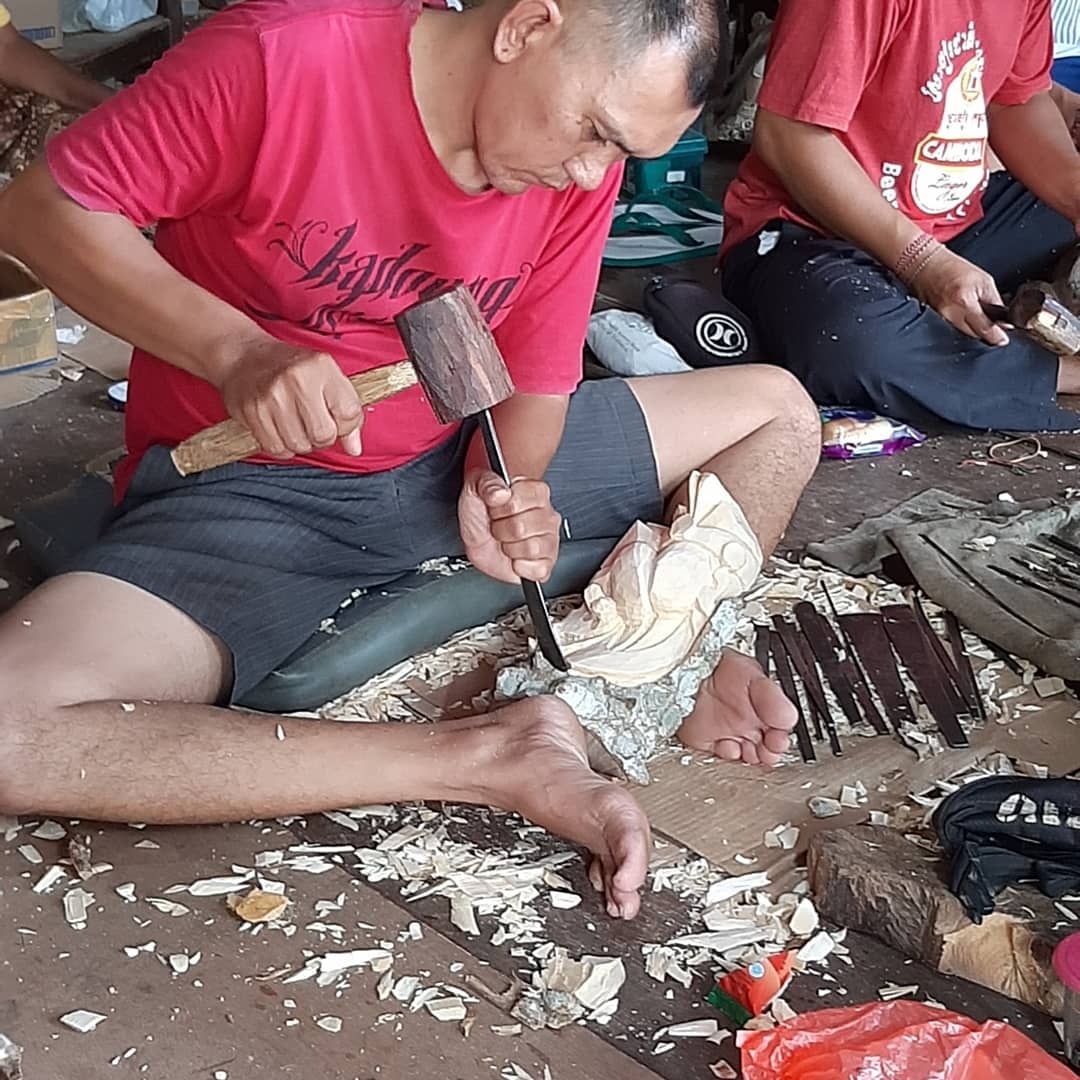
Mas Village wood carvers at work
Image credit: @travelbaliwithraka
If you’re looking to bring some pieces home, just down the road is the Njana Tilem Gallery where there are several masterpieces for sale. Prices are unsurprisingly on the high side but there are other galleries in the area if you’re looking for something more affordable.
As with Celuk, most galleries also function as workshops so if you’ve got time to spare, you could check out how proper wood carving is done.
8. Dukuh Sibetan Village – salak plantation and wine tasting
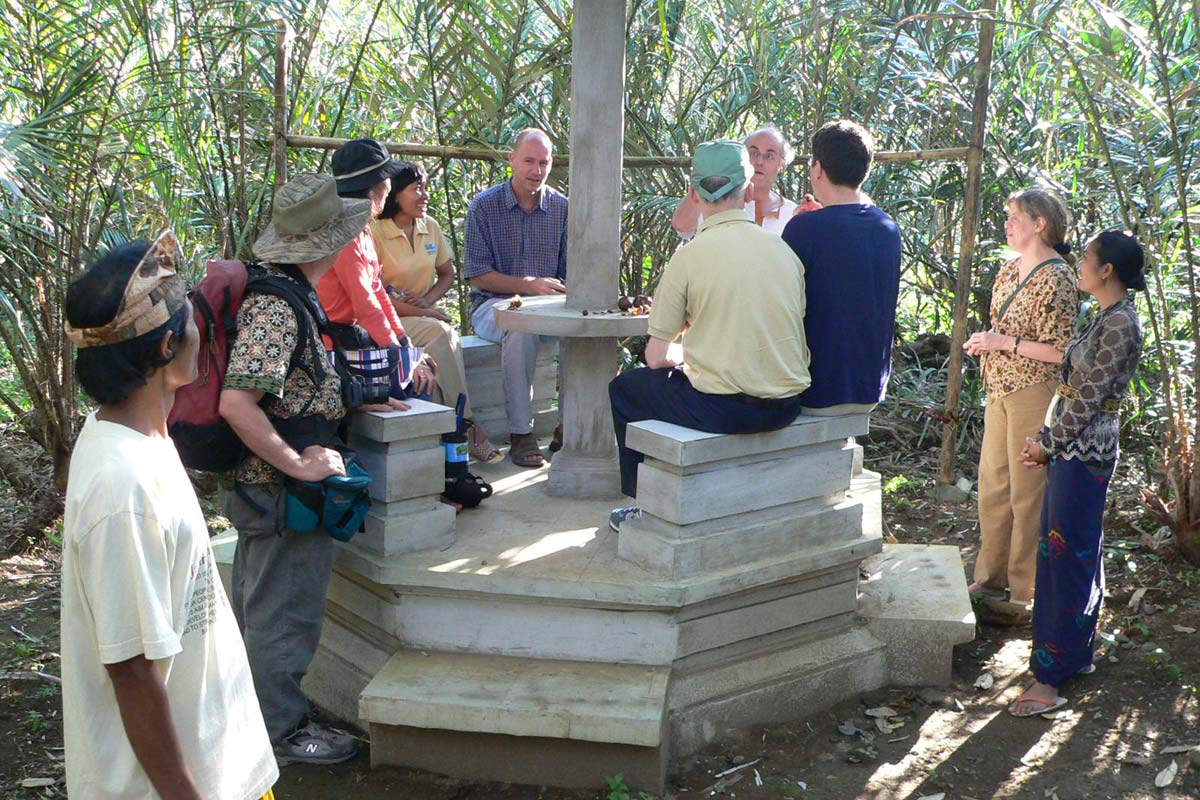
Salak tasting with officials from the Jaringan Ekowisata Desa (JED) and local villagers
Image credit: Jaringan Ekowisata Desa
One of the biggest dilemmas in Bali’s tourism scene is how attractions should maintain the balance between tourism development and preserving the island’s rural charm. Dukuh Sibetan Village is a shining example of how to achieve an ideal middle ground.
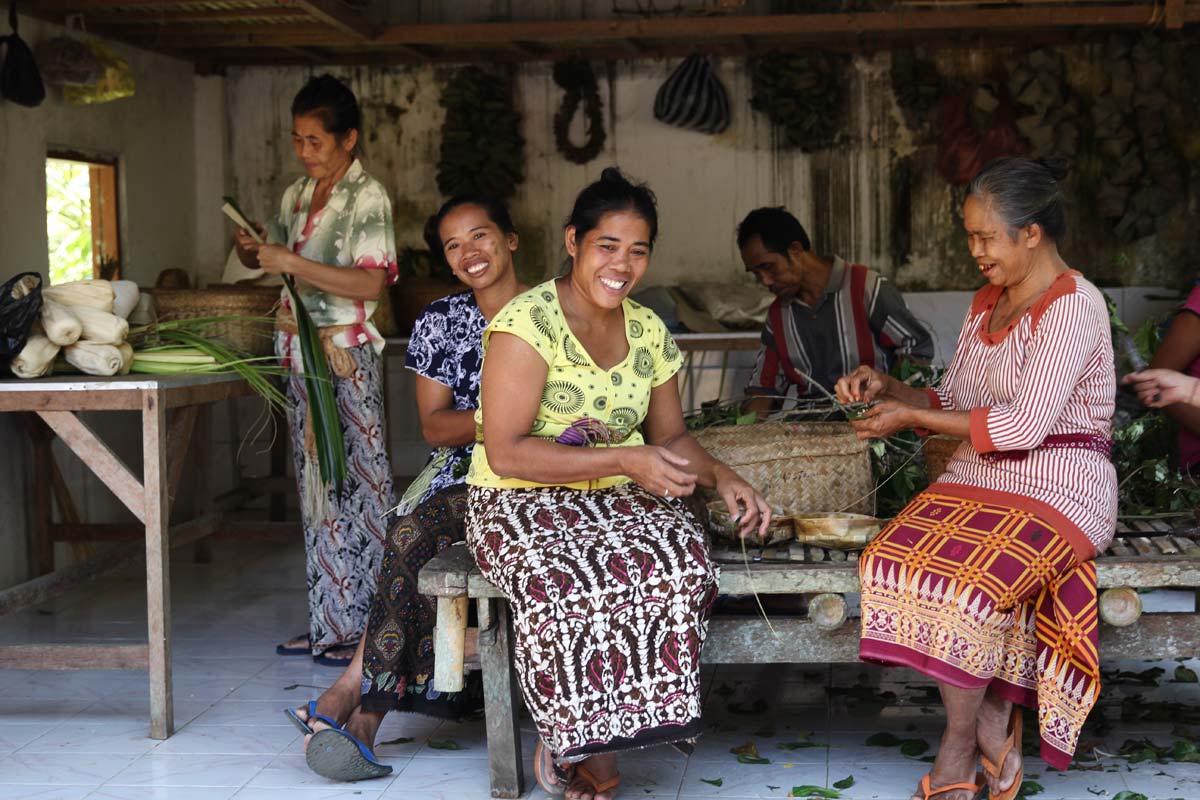
The daily life of Dukuh Sibetan villagers
Image credit: Jaringan Ekowisata Desa
The village is one of the driving forces behind the Jaringan Ekowisata Desa (JED) initiative, literally the ecotourism village network. They are directly involved in managing tourist visits to the village, giving visitors a chance to see rural Balinese life in all of its authenticity using a sustainable tourism approach.
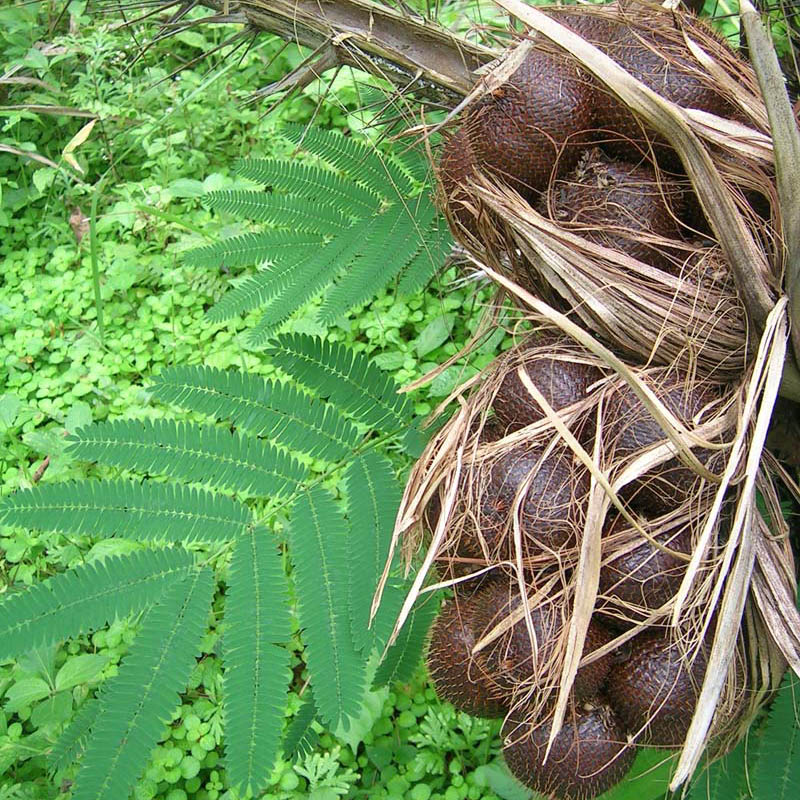
Salak fruit ready to be picked. The snake-like scaly exterior is where the fruit got its nickname
Image credit: Jaringan Ekowisata Desa
Dukuh Sibetan is particularly known for its snake fruit plantation, locally known as salak. Here, visitors can have a taste of the 14 varieties of salaks grown in the village and there’s also a winery where visitors get to see how the fruit is processed into wine before having a tasting.
Due to the business model, visits to the village have to be arranged through JED with each day trip priced at USD75, while an overnight stay costs USD105. The cost is all-inclusive though, with lunch, transportation, and an English-speaking guide provided by JED, with visits lasting approximately 9 hours from 8AM until 5PM.
Bali villages to visit
As the saying goes, when in Bali, do as the Balinese do. Relatively untouched by the rampant tourism development that has transformed the island, these Bali villages offer visitors a look at what life in unspoiled parts of Bali is like.
For more spots to see in Bali, check out these stories:
- 8 Bali fine-dining restaurants with molecular gastronomy cuisine
- 8 sacred Bali temples to visit
- Galungan Festival in Bali
- Newborn giraffe in Bali Safari Park is named Corona
- 8 Bali spas with luxury massages
- Bali Beach Glamping offers accommodation for Rp. 500K/night
Cover image adapted from @dektajuna and @travelling_with_ria
Enjoying The Smart Local Indonesia? Follow us on Facebook, Instagram, and Twitter for more stories like this.
